UPSC Daily Current Affairs: 28th October 2024 | Current Affairs & Hindu Analysis: Daily, Weekly & Monthly PDF Download
GS1/Indian Society
Sohrai Painting
Source: Times of India
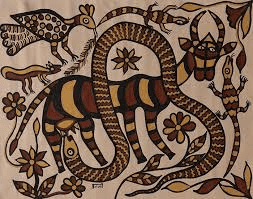
Why in news?
The Prime Minister of India presented a Sohrai painting to the President of Russia during the recent BRICS summit held in Kazan.
About Sohrai Painting
- Sohrai painting is an indigenous mural art form originating from India.
- The term 'Sohrai' derives from the word 'soro,' which means 'to drive with a stick.'
- This art form has its roots in the Meso-chalcolithic period, approximately between 9000 and 5000 BC.
- Excavations at the Isko rock shelter in the Barkagaon area of Hazaribagh have revealed rock paintings that closely resemble traditional Sohrai art.
Theme:
- The themes of Sohrai paintings are primarily based on natural elements, including forests, rivers, and animals.
- These ancient artworks are created by tribal women (Adivasi) using natural materials such as charcoal, clay, or soil.
- The earliest forms of Sohrai art were represented as cave paintings.
- Sohrai painting is practiced by indigenous communities, particularly in the states of Jharkhand, Bihar, Odisha, and West Bengal.
- The art is notably practiced by women from the Kurmi, Santal, Munda, Oraon, Agaria, and Ghatwal tribes.
- The Hazaribagh region of Jharkhand has been awarded a Geographical Indication (GI) tag for this art form.
Characteristics:
- Sohrai paintings are distinguished by their vibrant colors, intricate patterns, and symbolic motifs.
- Annually, a Sohrai festival is celebrated to mark the harvesting season and the onset of winter.
GS3/Defence & Security
What is DF-26 Missile?
Source: Eurasian Times

Why in news?
China's arsenal of DF-26 intermediate-range ballistic missiles (IRBMs) has seen significant expansion, with recent satellite images revealing nearly 60 additional launchers at a key production facility in Beijing.
Overview of DF-26 Missile:
- The DF-26, also known as Dong Feng-26, is an intermediate-range ballistic missile developed by China.
- This missile is capable of targeting both land-based installations and maritime assets.
Specifications:
- Length: 14 meters
- Diameter: 1.4 meters
- Launch Weight: 20,000 kg
Propulsion System:
- Uses a two-stage solid propellant for launching.
Range:
- The DF-26 can strike targets located approximately 3,000 to 4,000 kilometers away (1,860 to 2,485 miles).
Design Features:
- It boasts a modular design that allows the launch vehicle to carry two types of nuclear warheads and various conventional warheads.
- Equipped with advanced guidance systems, the DF-26 can adjust its flight path mid-air, enhancing its maneuverability.
Anti-Ship Variant:
- The DF-26 missile is recognized for its anti-ship version, known as the DF-26B.
- This variant is specifically engineered to engage naval targets, including aircraft carriers.
GS2/International Relations
Lord’s Resistance Army
Source: The Hindu

Why in News?
A court in Uganda has imposed a 40-year prison sentence on Thomas Kwoyelo, a commander of the Lord’s Resistance Army (LRA), following a significant war crimes trial related to his involvement in the group's prolonged history of violence.
About Lord’s Resistance Army:
- The LRA is a Ugandan rebel group currently active in the border areas of the Democratic Republic of the Congo (DRC), Central African Republic (CAR), and South Sudan.
- Founded by Joseph Kony in 1988, the LRA claims to seek the restoration of honor for the Acholi ethnic group and aims to establish a government based on Kony's interpretation of the Ten Commandments.
- For over 30 years, the LRA has been recognized as one of Central Africa's most brutal and persistent armed groups.
- Since its inception in 1987, the LRA has forcibly recruited more than 67,000 individuals, including around 30,000 children, to serve as child soldiers, sex slaves, and porters.
- The group has inflicted severe trauma on communities and has been classified as a terrorist organization by the United States.
- The International Criminal Court (ICC) has issued arrest warrants for Joseph Kony and other key leaders of the LRA, marking a significant legal action against the group.
- The LRA finances its operations through the illegal trade of elephant ivory, gold, and diamonds.
- Since 1994, the group has reportedly received support from the Government of Sudan.
GS3/Animal Husbandry
21st Livestock Census
Source: The Hindu

Why in news?
The Union Minister of Fisheries, Animal Husbandry and Dairying has inaugurated the 21st Livestock Census in New Delhi.
- The livestock census is a thorough survey aimed at gathering information on various livestock species such as cattle, buffaloes, sheep, goats, pigs, and poultry. The latest census was performed in 2019.
Benefits of Livestock Census for India
- Data Collection and Analysis: The census provides vital information on the quantity and types of livestock, their geographical distribution, and trends over time. This data is essential for creating policies and programs for the livestock sector.
- Planning and Policy Formulation: Accurate livestock data enables the government to devise policies regarding livestock health, breeding, and management, leading to improved resource allocation and focused interventions.
- Economic Growth: The livestock sector significantly contributes to the agricultural economy. The census identifies opportunities for growth and investment in areas like dairy, meat production, and poultry farming.
- Resource Management: Understanding the livestock population aids in effective management of resources such as feed, water, land usage, and veterinary services.
- Food Security: By evaluating livestock numbers and health, the census informs strategies to boost food production, enhance nutrition, and ensure food security for the population.
- Employment Generation: The livestock sector generates employment for millions, particularly in rural regions. The census helps monitor employment trends and develop skill enhancement programs.
- Sustainability and Environmental Management: Data from the census can direct sustainable practices in livestock management, minimizing environmental impacts and promoting animal welfare.
- Market Development: Information collected can aid in market analysis and development, resulting in improved pricing and market access for farmers.
- Research and Development: The census supports research initiatives in areas such as animal genetics, health, and nutrition, fostering innovation within the livestock sector.
- Integration with Other Sectors: Livestock is integral to the broader agricultural ecosystem. The census facilitates the integration of livestock management with crop production, enhancing overall agricultural productivity.
Overview of the Livestock Census
The Livestock Census is conducted every five years in India, covering all domesticated animals, poultry, and stray animals. It gathers detailed information on species, breed, age, sex, and ownership. Initiated in 1919, a total of 20 censuses have been completed so far, with the 21st census slated for October 2024 to February 2025, encompassing 30 crore households with the assistance of around 87,000 enumerators.
Animals Included in the 21st Census
The upcoming census will catalog sixteen species, including cattle, buffalo, yak, sheep, goats, pigs, and others, along with 219 indigenous breeds recognized by ICAR-NBAGR. Poultry species such as chicken, duck, turkey, and emu will also be included.
Objectives of the Livestock Census
- The census supports employment and economic growth in rural areas, as the livestock sector contributes 4.7% of the nation’s Gross Value Added (GVA) and 30% of the GVA in agriculture.
- Data collected aids in policy development, estimating GVA, and monitoring Sustainable Development Goals (SDGs).
- The Livestock Census will provide crucial data related to:
- Goal 2 (Zero Hunger)
- Target 2.5 (to maintain genetic diversity in food and nutrition), specifically Indicator 2.5.2 (the percentage of local livestock breeds that are at risk of extinction).
Digitization and New Data Points in the 21st Census
Building on the 2019 digitized census, the 21st census will also utilize mobile applications for data collection, monitoring, and reporting, while tracking collection locations via GPS. It will include several new data points to enhance the richness of the information collected:
- Data on Pastoral Animals and Pastoralists: For the first time, the census will gather information regarding the contributions of pastoralists to the livestock sector, including their socio-economic status and livestock holdings.
- More Detailed Information: The census will identify the proportion of households whose primary income derives from the livestock sector and will also gather data on the gender of stray cattle.
The 2019 census reported a livestock population of 535.78 million, which included:
- 192.9 million cattle
- 148.88 million goats
- 109.85 million buffaloes
- 74.26 million sheep
- 9.06 million pigs
- All other animals collectively accounted for just 0.23% of India’s total livestock population.
GS3/Environment
Sustainability science for FMCGs
Source: The Hindu

Why in News?
India’s Anusandhan National Research Foundation and the BioE3 policy promote academia-industry collaboration, driving the bioeconomy for economic growth, sustainability, and climate action commitment.
What is BioE3 policy?
The BioE3 policy aims to transform chemical industries into sustainable bio-based models, promoting biotechnology to drive economic growth, protect the environment, and create jobs, supporting India’s sustainable development and climate goals.
Primary Environmental impacts associated with FMCG production and consumption:
- Resource Depletion: The production of FMCGs often necessitates significant natural resources, such as water, energy, and raw materials. For instance, the cultivation of palm oil, commonly found in food and personal care items, can lead to deforestation as forests are cleared for plantations.
- Greenhouse Gas Emissions: The manufacturing and distribution processes of FMCGs contribute to greenhouse gas emissions at various stages, from sourcing raw materials to production and transportation.
- Waste Generation: FMCGs, particularly those with single-use packaging like plastics, generate substantial waste, often ending up in landfills or oceans, resulting in environmental pollution.
- Water Pollution: The production and use of FMCGs, such as soaps and detergents, can cause water pollution through the discharge of untreated wastewater containing harmful substances.
- Loss of Biodiversity: Agricultural practices for sourcing raw materials like palm oil can lead to habitat destruction, threatening biodiversity. Practices such as monoculture farming and deforestation disrupt ecosystems and endanger wildlife.
How can FMCG companies implement sustainable practices across their supply chains?
- Companies should adopt responsible sourcing policies, utilizing certified sustainable palm oil and other raw materials that comply with 'No Deforestation, No Peat' standards.
- Implementing energy-efficient processes, transitioning to renewable energy sources, and optimizing logistics can help minimize the carbon footprint throughout the supply chain.
- Emphasizing recycling, reusing materials, and developing biodegradable or compostable packaging can aid in reducing waste and resource depletion.
- The integration of bio-based or synthetic alternatives to traditional materials can also be advantageous.
- Companies should take measures to diminish water usage in manufacturing and treat wastewater to prevent water pollution.
- Collaborating with smallholder farmers to adopt regenerative agricultural practices can help restore soil health, enhance biodiversity, and support sustainable livelihoods.
What metrics should be used to measure the effectiveness of sustainability initiatives in FMCGs?
- Carbon Footprint Reduction: Tracking greenhouse gas emissions throughout the supply chain and establishing targets for reducing Scope 1, 2, and 3 emissions.
- Sustainable Sourcing Percentage: Measuring the proportion of raw materials sourced sustainably, such as certified palm oil or recycled materials.
- Waste Reduction and Recycling Rates: Monitoring the volume of waste generated, the amount sent to landfills, and the recycling rate of packaging materials.
- Water Usage and Pollution Levels: Tracking water consumption in production and measuring the quality of wastewater discharged to ensure compliance with environmental standards.
- Biodiversity Impact: Assessing the impact of sourcing practices on ecosystems and monitoring initiatives aimed at protecting or restoring biodiversity.
- Product Sustainability Index: Creating a sustainability index for products that considers their entire life cycle, from raw material extraction to end-of-life disposal.
Way forward:
- Strengthen Collaboration and Innovation: Encourage partnerships between academia, industry, and government to propel research and development of sustainable alternatives to traditional materials like palm oil, implementing innovative practices throughout the FMCG supply chain.
- Implement Comprehensive Sustainability Frameworks: Establish regulatory frameworks that incentivize sustainable practices, including mandatory reporting on sustainability metrics, eco-labeling for products, and supporting circular economy initiatives to minimize waste and resource depletion.
GS3/Environment
What is the Hasdeo Arand Forest?
Source: Indian Express

Why in News?
In Chhattisgarh’s Hasdeo Arand forest, local tribes ambushed police as tree-felling for coal mining resumed in the area. This forest is often referred to as the "lungs of Chhattisgarh" due to its rich biodiversity. It is the largest unfragmented forest in Central India, featuring pristine Sal and teak forests, and covers an area of 1,879.6 sq km across the Sarguja, Korba, and Surajpur districts. The Hasdeo River flows through this forest, which is home to nine protected species listed under Schedule I of the Wildlife Protection Act, 1972, including elephants, leopards, sloth bears, Indian grey wolves, and Indian pangolins. The forest supports 92 bird species, 25 mammals, 16 types of snakes, and serves as a vital corridor for elephants and tigers. Additionally, it hosts 640 plant species, including 128 medicinal plants and 40 timber-yielding species.
Why are the People Protesting for its ‘Protection’?
- Environmental Impact: Mining activities pose a significant threat to forest cover, endangering biodiversity and disrupting wildlife corridors.
- Livelihood Concerns: Local communities rely heavily on the forest for agriculture and forest products, making them vulnerable to changes in land use.
- Displacement Issues: Residents report that the compensation and resettlement options offered are inadequate compared to the size of their current homes.
- Alleged Forgery: Villagers claim that fraudulent gram sabha resolutions were utilized to obtain clearances for mining operations.
- Demand for Cancellations: Activists are calling for the cancellation of the Parsa coal block and seek assurances to protect the 1,995 sq km Lemru Reserve Forest from future mining activities.
GS3/Environment
Nature Conservation Index
Source: DTE
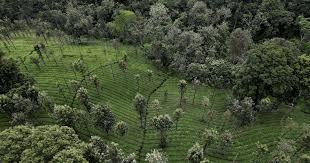
Why in News?
India has received a low score of 45.5 out of 100, placing it 176th in the 2024 Global Nature Conservation Index.
About Nature Conservation Index:
- The Nature Conservation Index (NCI) is developed by the Goldman Sonnenfeldt School of Sustainability and Climate Change at Ben-Gurion University of the Negev.
- This index uses data-driven analysis to evaluate how well countries are managing the balance between conservation efforts and developmental activities.
- Its purpose is to assist governments, researchers, and organizations in recognizing conservation challenges and improving policies for long-term biodiversity preservation.
- This is the inaugural edition of the NCI, which assesses countries based on their initiatives in four key areas:
- Management of protected areas
- Addressing threats to biodiversity
- Governance related to nature and conservation
- Future trends concerning natural resource management in countries
Highlights:
- India's dismal ranking is primarily due to poor land management practices and increasing threats to its biodiversity.
- The evaluation pointed out various risks to India's biodiversity, such as:
- Habitat loss and fragmentation resulting from agriculture, urban development, and infrastructure projects.
- Climate change, which adds another layer of risk to the existing environmental challenges.
- The countries that ranked highest included Luxembourg, Estonia, and Denmark, while Zimbabwe and Costa Rica also made it into the top 10.
GS2/Governance
Reforming Multilateral Development Banks (MDBs)
Source: Good Returns

Why in News?
The G20 Independent Expert Group has released an assessment that evaluates the progress made by Multilateral Development Banks (MDBs) in increasing their lending capacities and attracting private investment. This evaluation reveals the disparity between current achievements and the ambitious "triple agenda" required to fulfill global development and sustainability objectives. The expert group, formed under the G20 Indian Presidency, is co-convened by NK Singh, Chairman of the Fifteenth Finance Commission, and former US Treasury Secretary Lawrence Summers.
- MDBs are critical financial institutions that provide loans, grants, and technical assistance aimed at promoting economic and social development in low- and middle-income countries.
- Examples include the World Bank Group, Asian Development Bank, African Development Bank, and Inter-American Development Bank.
- MDBs have played a vital role in reducing poverty, developing infrastructure, and improving human capital in developing regions.
- However, the changing global landscape necessitates reforms in MDBs to better support nations in achieving sustainable and inclusive growth.
Challenges Facing MDBs:
- Outdated Legal and Institutional Framework:
- The existing frameworks of MDBs, which were established after World War II for reconstruction, do not adequately address the complexities of the digital era.
- They fail to reflect the current realities and aspirations of developing nations, particularly those in the Global South.
- Limited Private Financing Engagement:
- MDBs are expected to mobilize $740 billion annually in private financing to meet climate and sustainable development goals (SDGs).
- However, their current involvement has only secured approximately $70 billion in private capital over the past year.
- Limited Local Currency Lending:
- While MDBs have made progress in expanding guarantees and risk mitigation tools, local currency lending remains insufficient, with few successful instances to date.
Key Recommendations for MDB Reforms:
- Triple Mandate for MDBs:
- Eliminate extreme poverty.
- Foster inclusive growth.
- Finance global public goods, focusing on sustainable development and climate objectives.
- Strategies to Achieve the Triple Mandate:
- MDBs should enhance their financial commitments threefold, create a "Global Challenges Funding" mechanism, and significantly increase private sector participation.
- Expanding Lending Capacity:
- MDBs have achieved a 33% increase in lending capacity and improved balance sheet utilization and guarantee platforms.
- However, they still fall short of the targeted tripling of capacity needed to fulfill their expanded mandate.
- Innovations in Capital Mobilization:
- MDBs have introduced innovative funding solutions, including hybrid capital options (non-voting shares) to attract further financing, though uptake has been limited.
- Private Sector Involvement:
- There is a pressing need to shift MDB cultures to reduce perceived risks for private capital.
- Engaging private investors, collaborating with rating agencies, and fostering a favorable investment environment are crucial steps forward.
Way Ahead to Strengthen MDBs:
- Enhancing Performance and Relevance:
- Current strategies do not fully leverage MDBs' potential to mobilize resources, align policies, and foster innovation.
- Customizable and flexible solutions, along with diverse instruments, are essential to meet the varying needs of different countries and sectors.
- Improving Governance:
- The governance structures of MDBs are often viewed as unrepresentative of developing nations.
- Greater transparency, accountability, and responsiveness are vital for the credibility and effectiveness of MDBs.
- Concessional Financing:
- Targeted support for the world’s poorest nations.
- Climate-Related Financing:
- MDBs have significantly increased commitments to climate financing, reaching $75 billion in 2023, compared to $42 billion in 2019, which includes $50 billion for mitigation and $25 billion for adaptation efforts.
- Coordination Among MDBs:
- MDBs are collaborating to harmonize procurement practices and have launched a digital co-financing portal to facilitate large-scale project coordination.
Conclusion:
The G20 report card highlights both the progress and shortcomings in MDB reforms. While MDBs have improved their lending capacity and initiated measures to enhance private sector participation, substantial work remains to accomplish the ambitious objectives of the "triple agenda." With a significant role to play, India’s leadership and commitment to MDB reforms could help create a more inclusive, responsive, and effective MDB system for the Global South.
GS3/Environment
Sambhar Lake
Source: ETV Bharat
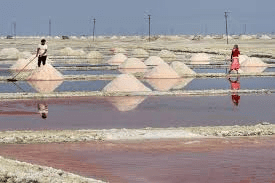
Why in News?
Recently, over 40 migratory birds from two to three different species have been discovered dead around Sambhar Lake in the Jaipur district, raising alarms among officials.
About Sambhar Lake:
- It is recognized as the largest saltwater lake in India.
- Located in the districts of Nagaur and Jaipur in Rajasthan.
- The lake has an elliptical shape, stretching 35.5 km in length with a width that ranges from 3 km to 11 km.
- It encompasses an area exceeding 200 sq.km and is entirely enclosed by the Aravalli hills.
- The lake receives water from two primary ephemeral streams, Mendha and Runpangarh, in addition to various rivulets and surface runoff.
- Sambhar Lake was designated as a Ramsar site in 1990, highlighting its significance as a wetland.
- During the winter months, the lake attracts numerous migratory birds.
- It, along with Phulera and Deedwana, serves as a crucial wintering habitat for flamingoes (both Phoniconaias minor and Phoenicopterus roseus) in India, outside of the Rann of Kachchh.
- Other bird species that frequent the area include pelicans, common shelducks, red shanks, common sandpipers, black-winged stilts, Kentish plovers, Ringed plovers, ruffs, and sociable lapwings.
- Sambhar Lake is a significant producer of salt, generating approximately 210,000 tonnes annually, which positions Rajasthan among India's top three salt-producing states.
GS3/Environment
Coral Triangle
Source: DTE
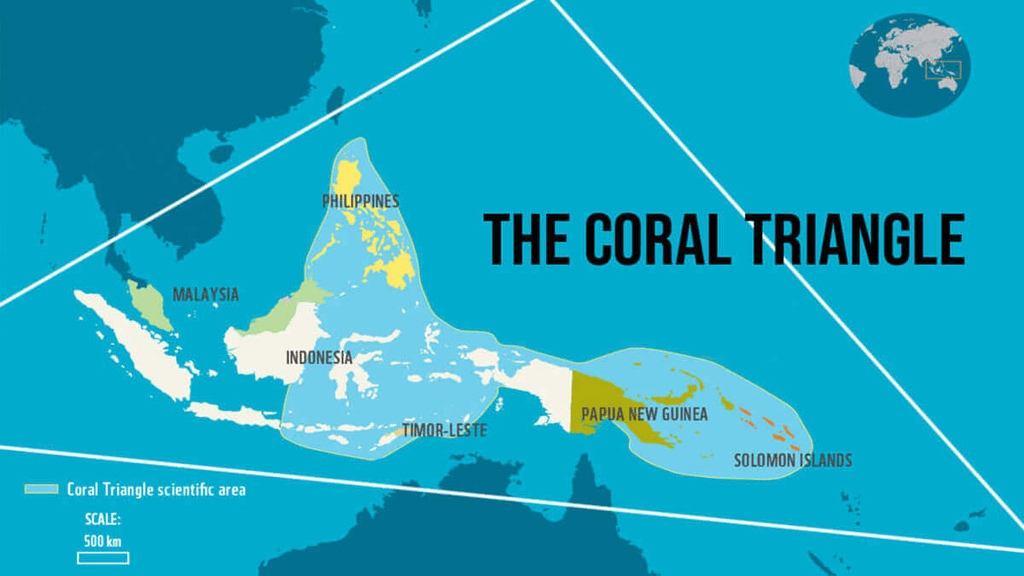
Why in News?
A report released at the 16th Conference of Parties (COP16) to the Convention on Biological Diversity (CBD) highlighted alarming facts about oil and gas activities in the Coral Triangle.
About Coral Triangle:
- The Coral Triangle, often referred to as the 'Amazon of the seas', encompasses a vast marine area that spans over 10 million square kilometers.
- This region includes several countries: Indonesia, Malaysia, Papua New Guinea, Singapore, the Philippines, Timor-Leste, and the Solomon Islands.
Significance:
- This area is incredibly important as it is home to 76 percent of the world's coral species.
- It supports over 120 million people who depend on its resources for their livelihoods, highlighting its critical role in local economies and food security.
Threats:
- Unsustainable fishing practices are depleting fish populations and disrupting marine ecosystems.
- Pollution from coastal development is damaging water quality and harming marine life.
- Climate change is causing coral bleaching, which significantly reduces coral health and biodiversity.
What are Corals?
- Corals are marine animals that are sessile, meaning they attach themselves permanently to the ocean floor.
- They engage in a symbiotic relationship with single-celled algae known as zooxanthellae.
- The algae provide nutrition to the corals through photosynthesis, utilizing sunlight for energy.
- Corals also use their tiny, tentacle-like structures to capture food from the water, which they then consume through their mouths.
- Each individual coral organism is called a polyp, and these polyps live in colonies that can consist of hundreds to thousands of genetically identical individuals.
GS2/Governance
What are the Digital Arrest Scams?
Source: Times of India

Why in News?
The Prime Minister in his recent broadcast of “Mann Ki Baat” warned about the ‘Digital Arrest’ scams in India.
What is Digital Arrest?
Details
- A deceptive scheme where fraudsters pose as law enforcement officials to extort money from victims by falsely claiming they are under arrest.
Modus Operandi
- Scammers utilize audio or video calls to create fear and intimidate victims.
- They assert that victims are involved in illegal activities, such as drug trafficking or possession of contraband.
- Victims are often kept under continuous visual surveillance until their payment demands are satisfied.
Common Tactics
- Employing deepfake videos and fabricated arrest warrants to deceive victims.
- Issuing threats suggesting that family members are implicated in criminal activities.
- Making false assertions about parcels containing illegal items being linked to the victim.
Victim Impact
- Victims may suffer severe financial losses, experience emotional trauma, and feel a heightened sense of vulnerability due to the aggressive tactics used by scammers.
Recent Trends
- There has been a significant increase in reported incidents, with over 11 lakh complaints of financial cyber fraud in 2023.
- The rise in such incidents is largely attributed to the growing number of internet users.
Prevention Measures
- Heightened awareness of scams and the importance of verifying the identities of callers.
- Immediate disconnection from any suspicious calls.
- Reporting any incidents to local law enforcement and cybercrime helplines.
Legal Framework
- These scams are governed under the Information Technology Act, 2000.
- Victims can file reports through the National Cyber Crime Reporting Portal at www.cybercrime.gov.in.
GS1/History & Culture
Kittur Rani Channamma
Source: The Hindu
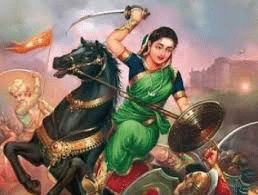
Why in news?
On the occasion of the 200th anniversary of Kittur Vijayotsava, a special commemorative postage stamp was unveiled at the historic Kittur Rani Channamma Stage located within the Kittur Fort premises.
About Kittur Rani Channamma:
- Born in Kakati, a small village in the current Belagavi district of Karnataka.
- Became the queen of Kittur after marrying Raja Mallasarja of the Desai family.
- Following the death of Mallasarja in 1816, their eldest son, Shivalingarudra Sarja, took over the throne.
- Shivalingarudra adopted a child named Shivalingappa as his successor before his death in 1824.
- The British East India Company did not acknowledge Shivalingappa as the rightful heir, citing the 'doctrine of lapse'.
Key facts about the Kittur Rebellion:
- In October 1824, John Thackery, a British official stationed in Dharwad, led an assault on Kittur.
- During this initial confrontation, the British suffered significant casualties, including the death of the Collector and political agent, St. John Thackeray, at the hands of Kittur forces.
- Two British officers, Sir Walter Elliot and Mr. Stevenson, were captured and taken hostage.
- Despite the early setback, the British army mounted another attack on Kittur Fort and succeeded in capturing it.
- Rani Chennamma and her family were imprisoned in Bailhongal Fort, where she ultimately passed away in 1829.
|
38 videos|5293 docs|1118 tests
|
FAQs on UPSC Daily Current Affairs: 28th October 2024 - Current Affairs & Hindu Analysis: Daily, Weekly & Monthly
| 1. What is the significance of Sohrai Painting in Indian culture? |  |
| 2. What are the key features of the DF-26 missile? |  |
| 3. Who are the members of the Lord's Resistance Army and what is their agenda? |  |
| 4. What is the purpose of the 21st Livestock Census in India? |  |
| 5. Why is the Hasdeo Arand Forest important for biodiversity conservation? |  |





















